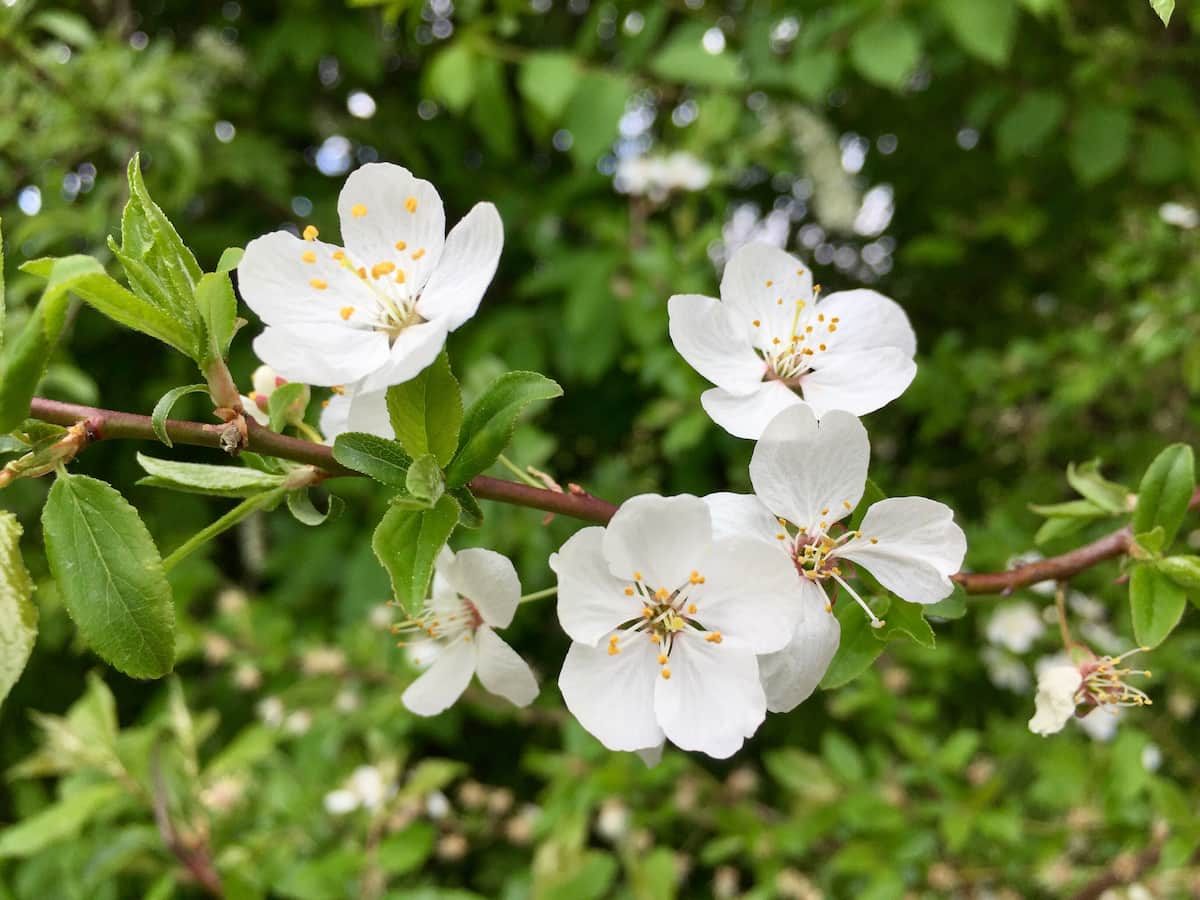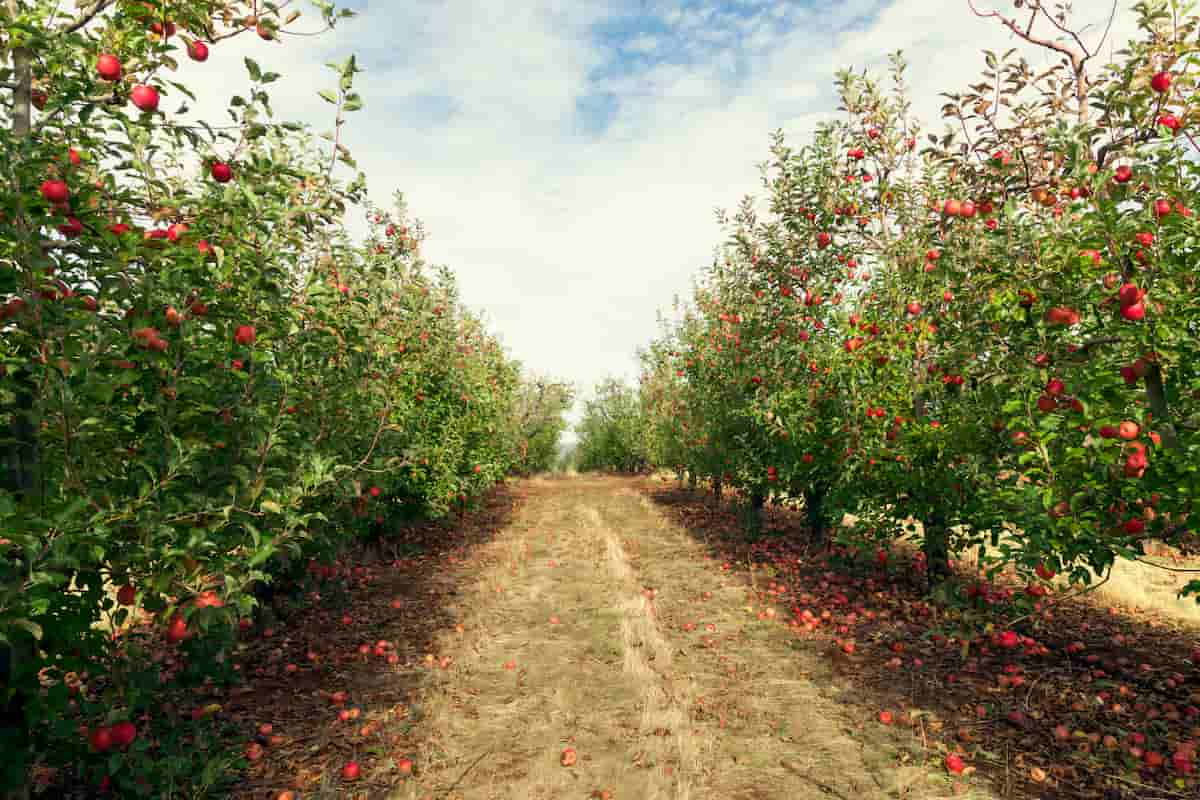Apple production is often limited by the low number of female flowers on apple trees, limiting fruit set and yield. Research has shown that several factors can affect the number of female flowers, including tree age, pruning, and the use of plant growth regulators. Specific apple cultivars, such as ‘Florina’ and ‘Red Chief Delicious, have been identified that tend to produce more female flowers.

Increasing the proportion of female flowers can lead to higher fruit yields and improved profitability for apple growers. Further research could lead to the developing of new techniques and cultivars optimized for maximum fruit production.
How to Increase Female Flowers in Apple
Introduction to Apple cultivation
Apple cultivation is an important aspect of horticulture that involves the commercial production of apples. Due to their high nutritional value and global demand, apples are widely grown in different regions worldwide. Apple farming includes planting, pruning, pest and disease control, and harvesting. Orchard establishment can be achieved through traditional or modern techniques like high-density planting systems.
Choosing the suitable apple cultivars is vital in apple farming, with each variety having varying resistance to pests, diseases, and optimal growing conditions. Successful apple farming requires the implementation of recommended practices and a deep understanding of the environmental and biological factors that affect apple trees.
Understand the Anatomy of Apple Flowers
The anatomy of an apple flower can be broken down into its different parts. The flower consists of four main parts: the sepals, petals, stamens, and carpels. Sepals are green leaf-like structures at the base of the flower, while petals are colorful, fragrant structures that attract pollinators. The stamens are the male reproductive structures consisting of a filament and an anther that produces pollen.
The carpels are the female reproductive structures with a stigma, style, and ovary. The stigma is attaches to the surface at the top of the style that receives pollen, while the ovary contains the ovules that eventually become seeds. Successful pollination and fertilization of the ovules by pollen lead to apple fruit development. Understanding the anatomy of an apple flower is important for apple growers to ensure optimal pollination and fruit set.
Best Variety of Cultivation Apple
Honeycrisp, Fuji, Gala, Granny Smith, Pink Lady, Red Delicious, Braeburn, Jonagold, McIntosh, Rome, Golden Delicious, Cripps Pink, Empire, Jonathan, Cameo, Arkansas Black, Idared, Cortland, Crispin, Mutsu, Northern Spy, Paula Red, SnowSweet, Spartan, and Winesap are some of the best apple varieties for cultivation. Each cultivar has different properties like flavor, texture, color, and disease resistance.
Optimal Growing Conditions for Apple
- Climate: Apples thrive in temperate climates with cool winters and moderate summers. They require a minimum of 700-1000 chill hours (hours below 45°F) for optimal growth and fruit set.
- Soil: Apples prefer well-drained soils with a pH between 6.0-7.0. The soil should be rich in organic matter and have good water-holding capacity.
- Sunlight: Apples require full sun exposure for at least six hours daily for optimal growth and fruit production.
- Water: Apples require an adequate and consistent water supply, especially during fruit development. Irrigation systems should be installed if necessary.
- Fertilization: Apples require balanced fertilization to promote healthy growth and fruit development. Fertilizer application should be based on soil testing results.
- Pest and disease management: Apples are susceptible to a wide range of pests and diseases, and growers must adopt integrated pest management strategies to prevent and manage them.
In case you missed it: How to Increase Female Flowers in Avocado: Explained in 10 Simple Steps

Apple Flowering stage
Apple flowering is a critical stage in fruit development, where trees produce both male and female flowers, and pollination is necessary for fertilization. Pollination can occur naturally through bees, wind, or artificially. After successful pollination, fertilized flowers develop into apples, while un-fertilized flowers fall off. The timing and duration of flowering depend on cultivars and environmental factors. Proper management during this stage is essential for optimal fruit set and yield, including pest and disease control measures. Apple flowering typically lasts a few weeks, depending on the cultivar and environmental conditions. Effective management can lead to increased profitability for apple growers.
Factors that Affect Less Female Flowers in Apple
- Tree age: Older apple trees produce fewer female flowers than younger ones.
- Pruning: Over-pruning or improper pruning can reduce the number of female flowers in apple trees.
- Nutrition: Imbalanced or inadequate nutrition, especially nitrogen, can affect the number of female flowers.
- Climate: Extreme temperature fluctuations, frost, or excessive rainfall can cause flower bud damage and impact female flower production.
- Pests and diseases: Infestations of pests such as mites or diseases such as fire blight can also reduce the number of female flowers.
- Genetics: Some apple cultivars naturally produce fewer female flowers than others.
- Pollination: Pollination, either due to low pollinator populations or inadequate pollination practices, can result in fewer female flowers.
10 Simple Tips to Increase Female Flowers in Apple
- Proper pruning: Regular pruning to shape the tree and promote good airflow can help increase the number of female flowers.
- Nutrition: Proper soil nutrition, especially the right amount of nitrogen, phosphorus, and potassium, can improve the number of female flowers.
- Water management: Consistent moisture levels in the soil can help improve flower production.
- Plant growth regulators: Using plant growth regulators can help enhance female flower production in apple trees.
- Pest and disease control: Effective management of pests and diseases can help prevent flower bud damage and enhance female flower production.
- Tree age: Younger apple trees produce more female flowers than older ones, so establishing new orchards or replacing older trees can improve flower production.
- Thin fruit: Thinning the fruit after the fruit set can improve fruit size and quality and enhance flower production in the following season.
- Variety selection: Choosing apple cultivars that are known to produce a higher proportion of female flowers can improve overall flower production.
- Temperature management: Protection from extreme temperature fluctuations or frost can prevent flower bud damage and enhance female flower production.
- Pollination: Proper pollination practices, including adequate pollinator populations and timely pollination, can also enhance female flower production.
In case you missed it: How to Increase Female Flowers in Guava: Explained in 10 Simple Steps

Conclusion
Increasing the number of female flowers in apple trees is vital for optimal fruit production and yield. Various factors, including tree age, pruning, and plant growth regulators, affect the proportion of female flowers. Specific apple cultivars also tend to produce more female flowers. Implementing the ten simple steps, such as proper pruning and pest management, can increase the proportion of female flowers and improve profitability.
- Feed Your Flock for Less: Top 10 Tips to Save on Chicken Feed
- Ultimate Guide to Ossabaw Island Hog: Breeding, Raising, Diet, and Care
- Hatching Answers: The Top 10 Reasons Your Chickens Aren’t Laying Eggs
- Eggs and Economics: Breaking Down the Cost of Raising Backyard Chickens
- Defend Your Greens: Proven Methods to Keep Iguanas Out of Your Garden
- Ultimate Guide to Cinnamon Queen Chicken: A Comprehensive Guide for Beginners
- Ultimate Guide to California Tan Chicken: Breeding, Raising, Diet, Egg-Production and Care
- Ultimate Guide to Marsh Daisy Chicken: Breeding, Raising, Diet, and Care
- 10 Types of Chicken Farming Businesses You Can Start for Profits